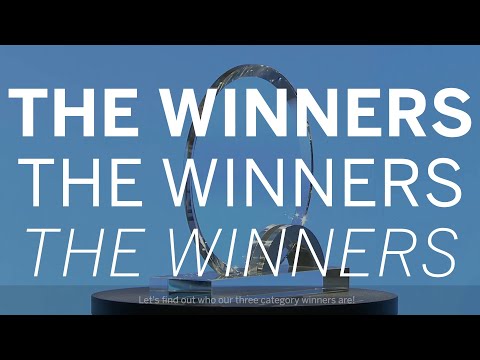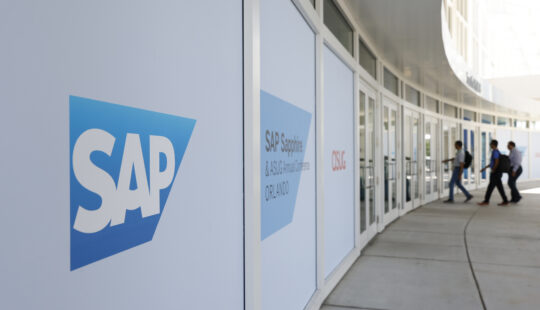For the first time in the award’s history, SAP CEO Christian Klein last week announced three winners of the Hasso Plattner Founders’ Award, the company’s most prestigious employee recognition.
The three teams were selected for outstanding and innovative projects in the new categories Customer Success, Operational Excellence, and Products and Technology.
In 2020, more than 200 nominations involved over 1,400 employees from 37 countries. Eight teams consisting of 51 employees from all over the world made it to the final round, and the winning teams have chosen charity organizations to which SAP will donate €10,000: Partners in Health and Barefoot College.

Intelligent Case Routing: Making the Machine Understand the Issue
The Customer Success category winner set out with the challenge to simplify the support triage and routing process within SAP Concur software. As tickets get older and remain unanswered, customer satisfaction score drastically drops.
“With over 200,000 support tickets created per year in SAP Concur alone, we understood that any improvement on the overall process would be multiplied and have a significant impact on our key customer support and experience metrics,” Frantisek Zdvoran explained. “We found that combining a deep understanding of the customer support world, processes, and challenges with the right teams behind SAP’s machine learning services would provide real, business value-driven results.”
Working on Intelligent Case Routing as a side project over the course of three years, Zdvoran and his team of Justin Lew, Alena Bartunkova, Lukas Tancer, and Radovan Murin built and implemented a machine learning solution that cuts down the manual effort using text recognition to examine past tickets.
Intelligent Case Routing assigns the cases to specialists faster and more accurately. The goal was to eliminate the labor-intensive, repetitive, and slow ticketing process. “We didn’t want to add complexity, but to remove it,” Zdvoran said. “Support cases run through our application have a six percent higher customer experience score, 16% faster time to close, 11% higher first contact resolution metric, and have a 8.4% lower change of hands number.”
On winning the award, Lew said: “We are beyond grateful and honored to have been selected as a winner and cannot give enough thanks to everyone that has helped and been supportive of us. We are so proud of how our diverse team has been able to marshal SAP’s intelligent enterprise and combine that with our customer-first approach to deliver an application that helps enhance our customer and employee experience.”
Monitor of Monitors: Holistic Picture of Cloud Health
The winning team in the Operational Excellence category successfully tackled the challenge of creating a single source of information on the condition of SAP’s cloud. The Monitor of Monitors brings all monitoring tools into a cohesive and consistent view that shows the complete picture of SAP’s cloud health.
Information that was previously siloed in disconnected monitoring tools, is now accessible and transparent in single service window. Monitor of Monitors not only enables SAP teams to detect, determine, and resolve problems and risks in the cloud much faster, it also allows operations and support teams across SAP to work faster and more collaboratively toward a common goal.
“Recognize faster, react faster, respond faster, fix faster,” Anthony Sanchez said, summing up what Monitor of Monitors enables SAP support teams to do to improve the lives of their customers. “Monitor of Monitors isn’t a niche; it has value for everyone in SAP. It integrates well with any technology or tool a team is using to manage the cloud health and alert management. It simply opens an exchange of information that is centralized and transparent.”
After the announcement that Monitor of Monitors had won the award, he added: “Today is one of the proudest days of my professional career. There are no words to capture the enormity of the pride I feel toward the team and the support we received from every corner. This was a true one SAP effort. We are all excited and motivated for the future of SAP, and the contributions we can continue to make.“
Team members also include Vittalraya Shenoy Adige, Gabor Kaszonyi, József Kertész, Birk Bohne, Marcus Mrozowski, Gregory Melasecca-Jr, Yu Chen, Alexander Julian Danek, and Daniel Koller.
SAP HANA Data Anonymization: Inventing a New Market
The winner in the category Products and Technology took on a particularly complex topic that is the subject of frequent legal and governmental changes. With SAP HANA Data Anonymization, the team developed a cross-industry solution for the anonymization of personal data that can be applied to a variety of use cases.
“Data privacy constraints have been road blockers to a number of use cases,” Stephan Kessler shared. “SAP HANA data anonymization strives to make privacy guarantees available throughout an entire organization, while integrating seamlessly into business applications.”
To achieve this, SAP HANA data anonymization is implemented at the database level, following the SAP HANA code “push-down” paradigm, leading to a tight integration of data and privacy mechanisms.
“As data privacy becomes a priority on business agendas, we are the first to offer this sort of anonymization features in the database core system,” Kessler explained. “The solution thus permits SAP to satisfy an urgent need of customers and society.”
On winning the award, the team said: “We are humbled and very honored to have received the Hasso Plattner Founders’ Award. SAP HANA data anonymization solves the challenge of combining privacy and innovation for internal and external stakeholders. We now have momentum to accelerate development and customer adoption to further improve our product, while helping customers, research, and society to demonstrate digital responsibility.”
Team members include Kristin Ulrich, Matthias Menz, Brian Raver, Kai Morich, Kaweh Amoi-Taleghani, and Kessler.
This article first appeared on the SAP Global News Center



